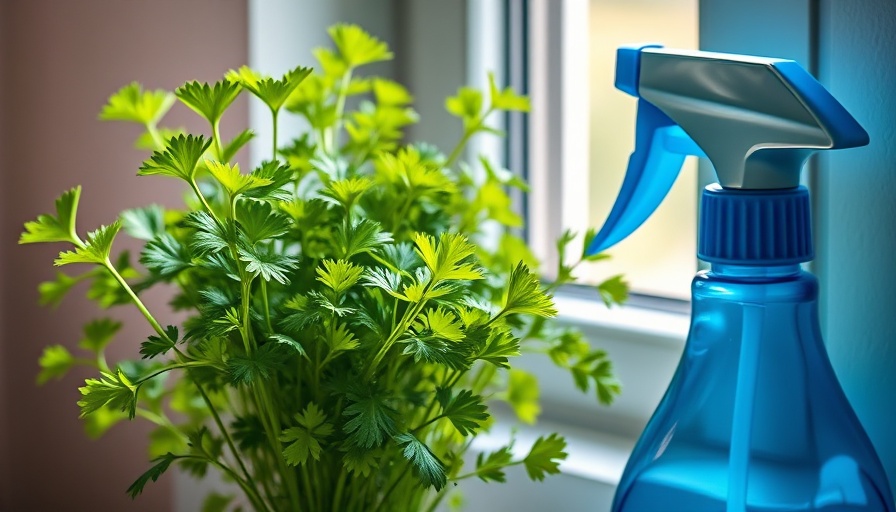
Transform Your Indoor Space: The Joy of Growing Cilantro
For many homeowners, adding a touch of greenery to the inside of their homes is not just about aesthetics; it's also about practicality. Picture this: fresh cilantro, straight from your own indoor herb garden, enhancing your culinary creations year-round. With the right knowledge and techniques, growing cilantro indoors can be an easy and fulfilling endeavor.
Cilantro: A Versatile Culinary Gem
Cilantro, or Coriandrum sativum, is cherished in various global cuisines, providing a crisp, fresh flavor that elevates countless dishes. Unlike the more widely known parsley, cilantro's unique profile is either loved or harshly criticized. This duality makes it essential to understand not only how to grow cilantro indoors but also how to utilize it effectively in your cooking.
Four Proven Methods to Grow Cilantro Indoors
Whether you're an urban dweller with limited space or simply someone wanting to keep gardening alive during harsh winters, there are numerous methods for growing cilantro indoors. Here are four effective ways:
1. Windowsill Gardening: Nature's Light at Home
If you have access to a south-facing window, growing cilantro on the windowsill is a great start. This method capitalizes on the natural sunlight that many homes receive each day. For optimal growth, aim for at least six hours of sunlight. However, if your climate grows intense, consider using sheer curtains to diffuse harsh afternoon rays. This approach makes it easy to grow a healthy cilantro plant and ensures you have fresh leaves on hand for your favorite recipes.
2. Indoor Grow Lights: Control Your Environment
For those who either lack sufficient natural light or prefer precise control over their growing conditions, indoor grow lights are an excellent alternative. Using LED or fluorescent lights can replicate the sun’s intensity and spectrum, allowing you to enjoy success in any room of your home. Position your grow lights about 6-12 inches above the plant, and make sure to run them for at least 12-14 hours daily. This method can lead to advantageous germination and simulate early spring growth.
3. Microgreens: Quick and Flavorful
If you're short on time or space, consider cultivating cilantro as microgreens. They sprout quickly, usually in about 10-14 days. Just use a shallow container filled with potting mix, sprinkle the seeds on top, and keep the soil moist. Microgreens not only require less light compared to full-grown plants but also pack a flavor punch, making them a popular choice for salads and garnishes.
4. Sprouts: The Easiest Option
For those seeking the ultimate simplicity in indoor gardening, sprouting cilantro seeds could be your answer. Within a week, you can harvest flavorful sprouts that require minimal resources and expertise. Simply soak your seeds overnight, drain them, and place them in a jar with cover while rinsing them daily. Before you know it, you’ll have crunchy, vibrant sprouts that enhance your sandwiches or salads!
Ensuring Successful Cilantro Growth: Considerations and Tips
As with any plant, proper care plays a significant role in the health of your cilantro. Here are essential tips:
- Temperature: Cilantro flourishes in cooler temperatures, ideally between 60-70°F. Avoid placing your plants near heating vents, as excessive warmth can lead them to bolt prematurely.
- Watering: Keep the soil consistently moist but not waterlogged. Overwatering can damage roots and lead to mold growth.
- Harvesting: Unlike most herbs, cilantro can produce for an extended period. Regular harvesting promotes bushier growth. Use scissors to snip leaves, allowing the plant to repopulate.
Conclusion: Enjoy the Fruits of Your Indoor Garden
Growing cilantro indoors is not just beneficial for your culinary pursuits; it's also an excellent way to engage with nature even in an urban setting or during the cold months. By employing any of the four methods mentioned, you’ll have fresh cilantro at your fingertips, uplifting your dishes with its signature flavor. Embrace the journey of indoor gardening and relish the satisfaction of homegrown goodness!
 Add Row
Add Row  Add
Add 


Write A Comment